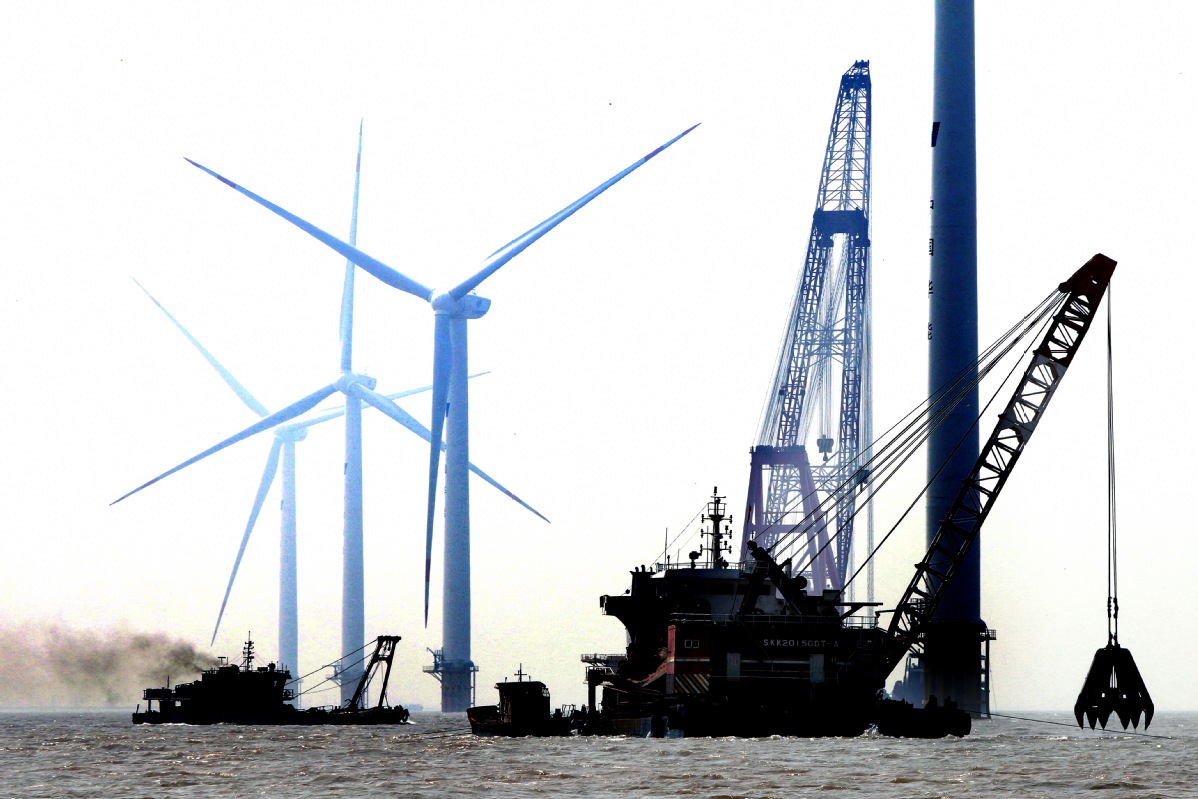Green finance to aid China's low-carbon shift


"The carbon trading market will help advance carbon neutrality with economic methods. As China's carbon emissions trading system launches, investment opportunities will spring up," Fan said.
On one hand, the transition toward more use of clean energy is a certainty. Therefore, investors can look for opportunities in China's wind power, photovoltaic, new energy vehicles, waste power generation and biodiesel industries, Fan added.
On the other hand, carbon trading prices will move in the same direction as related products. Prices of carbon emissions quotas, which will be a major cost for companies, will be passed on to players like steelmakers and oil refiners, resulting in price increases of related products. Industry leaders taking part in carbon trading enjoy advantages in terms of technology and scale. Fluctuations in carbon prices will exert less impact on them. Therefore, investment opportunities may lie in these industry leaders, Fan said.
Companies with technologies in carbon capture, utilization and storage may also be good investment targets in the Chinese market, said Feng Sheng, an analyst at Zhongtai Securities. Energy storage, which is expected to have a market value of over 1 trillion yuan ($154 billion), is another industry which will be lucrative over the long term, said Yin Zhongshu, an analyst at Everbright Securities.
Trading of carbon emissions quotas is not new in China. Trial trading was adopted in cities such as Beijing, Tianjin, Shanghai and Shenzhen at the municipal level beginning in 2011. Up to 3,000 companies from more than 20 industries including electric power, steel and cement have taken part in such trading. By the end of 2020, the total amount of traded carbon emissions exceeded 400 million tons, with the aggregate trading value exceeding 9 billion yuan.
More work is underway to consolidate the groundwork of national-level carbon trading. Former central bank governor Zhou Xiaochuan said at a meeting in late 2020 that there should be clearly defined pricing mechanisms and calculation rules regarding the price of carbon emissions quotas and tax rates.
Yuan Li, an analyst at Soochow Securities, said in a report released in late March that the calculation method for carbon emissions should be finalized in China in the first place, which is the base of all carbon neutrality-related missions. Meanwhile, a monitoring, reporting and verification (MRV) mechanism is also needed in the country, for it is the foundation of carbon emissions trading.
"A fair, impartial and transparent MRV mechanism is the core of the carbon emissions trading system, directly influencing the distribution of quotas and trading results. Meanwhile, a solid MRV mechanism can also provide reliable and true carbon data, which can serve as an important supervisory tool to ensure the credibility of the trading system and facilitate companies' carbon emissions work," Yuan said.
Companies should improve their own monitoring capabilities to improve report quality. In addition, a unified verification guideline and rules for institutions and staff should be set up so that a complete third-party verification management system can be built. On top of that, government should guide the marketization of third-party institutions to ensure the steady operation of carbon markets and regulate carbon trading, Yuan added.
While the electric power industry is allowing for carbon trading this year, industries such as cement and electrolytic aluminum should be included as soon as possible, said Zhang Xiliang, director of the Institute of Energy, Environment and Economy at Tsinghua University. Carbon emissions trading should cover more industries so that carbon pricing can work as an incentive more effectively.
As carbon emissions quotas are provided for free at the moment, regulators can study more distribution modalities such as auctions to increase market liquidity, he added.




































